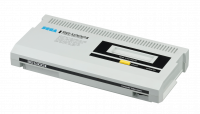SG-1000:SG-1000 Mods Wiki: Difference between revisions
(Added a new intro) |
(Expanded a little bit) |
||
| Line 6: | Line 6: | ||
[[File:SG-1000.png|200px]] [[File:SG-1000II.png|200px]] | [[File:SG-1000.png|200px]] [[File:SG-1000II.png|200px]] | ||
The SG-1000 was Sega's first | The Sega SG-1000 ("Sega Game 1000") is an 8-bit console from the third generation of video game consoles. The console was Sega's first game console, launched in Japan on July 15, 1983. The console later was released to the Australian and New Zealand markets, as well as a limited release in Italy, Spain, and Taiwan. Released alongside the SG-1000 was the SC-3000 ("Sega Computer 3000"), a hardware variant with a built in keyboard. A further revision, the SG-1000 II, was released changing the form-factor of cartridges to cards. Although the SG-1000 was vastly overshadowed by Nintendo's Family Computer (released on the same day), it gave the company valuable experience in the home video game market and the console formed the basis for the vastly more successful Sega Master System. | ||
</div> | </div> | ||
Revision as of 03:02, 25 May 2022
The Sega SG-1000 ("Sega Game 1000") is an 8-bit console from the third generation of video game consoles. The console was Sega's first game console, launched in Japan on July 15, 1983. The console later was released to the Australian and New Zealand markets, as well as a limited release in Italy, Spain, and Taiwan. Released alongside the SG-1000 was the SC-3000 ("Sega Computer 3000"), a hardware variant with a built in keyboard. A further revision, the SG-1000 II, was released changing the form-factor of cartridges to cards. Although the SG-1000 was vastly overshadowed by Nintendo's Family Computer (released on the same day), it gave the company valuable experience in the home video game market and the console formed the basis for the vastly more successful Sega Master System.
General Information
Technical Information
Video Information
Flash Carts
|
Other |

